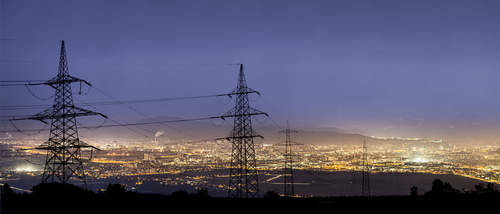Deloitte 2019 utilities outlook: focus on innovations to expand customer choice

Technology in the U.S. power and utilities sector will continue to evolve in the new year as customers demand more involvement and control over their electricity purchasing and energy use, according to Deloitte’s 2019 Power and Utilities Industry Outlook.
But author Scott Smith, vice chairman of U.S. Power & Utilities for Deloitte, questions whether current regulatory structures can adapt fast enough to keep pace with the evolution seen in utilities’ technology and business models.
“Electric power companies are tapping new technologies to serve increasingly sophisticated customers conditioned by other industries to expect the high-tech digital experiences that have become the ‘new normal,'” Smith explained. “New technologies are also expanding opportunities to improve operational efficiencies and prompting experiments with new business models. But regulatory structures are taking time to catch up. Change has begun, but it will need to spread faster for regulated utilities to meet evolving customer expectations.”
Although regulatory reforms are getting a late start, there are plenty of stakeholders who are working to move them forward. “You are seeing some regulatory reform,” Smith noted. “As regulators put in place policy to encourage renewables or smart meters or grid modernization, that’s regulators approving that and encouraging that side. I think regulatory policies [are] moving… probably not fast enough, and not in all states.”
Some of the regulatory changes that are being worked on currently include: Support for advanced metering infrastructure; storage mandates and targets; time-of-use rates for customers with batteries; approval of utility investment in electric vehicle (EV) charging infrastructure; allowing small-scale distributed energy operators to sell surplus power back into wholesale markets after aggregating their resources; different forms of performance-based ratemaking; and subscription-based electricity services with different levels of service including things like renewable-generated electricity, EV chargers, and smart thermostats.
Smith believes it is equally up to states, municipalities, utilities, energy companies and ratepayers to encourage the regulation to move forward.
“You’re seeing different priorities at the federal level,” Smith said, while some states are working to encourage the development of renewable energy. “We see the states thinking they’re going to fill a void that they perceive is there at the federal level.”
Innovation is also being advanced by corporate customers who choose to buy or contract renewable power, but are finding many of those sources still need to go through regulatory channels. And it’s not just corporate customers who are looking for new ways to acquire their energy. Individual ratepayers now have choices, compared to even 10 years ago. They are no longer restricted to only their local utility, and utilities have evolved by offering more services and options.
“Good industries are going to significantly change. With decarbonizing energy of the U.S. and the endless exceptions that you hear policies toward coal or this or that, that is kind of one direction,” he said. “But decarbonizing energy leaves more energy choice, more customer choice.”
Despite slower regulatory movement, innovation is a mainstay of the industry. Smith expects to see the technology landscape for utilities continue to broaden in 2019 because of the changes in how power is generated and the large number of choices out there. The industry will continue pushing for technological advancements in solar, wind, and other forms of generation.
“Think about when we used to produce power. Companies with these big power plants throw it on the grid and send it to users,” he said. “Now you’ve got renewables. Now you’ve got all the distributed generation. Power is coming on the grid from tens or hundreds of thousands or millions of sources.”
Smith found that utilities are taking an active role in creating new technologies and incubating startups, because they are learning that “only by being deeply involved in research, innovation, and testing can utilities discover what may lead to new pockets of value and what may turn out to be a dead end.”
Although innovation and customer choice will be driving forces that move the industry forward, they will join three important trends that have driven the industry for years: the displacement of coal-fired generation, steady growth in natural gas, and rapid growth in wind and solar generation.
“The industry doesn’t get credit for how much change they’ve undertaken and how long they do it and they’ve still got a long way to go,” Smith said. “I think you are going to see this pace of change continue.”
